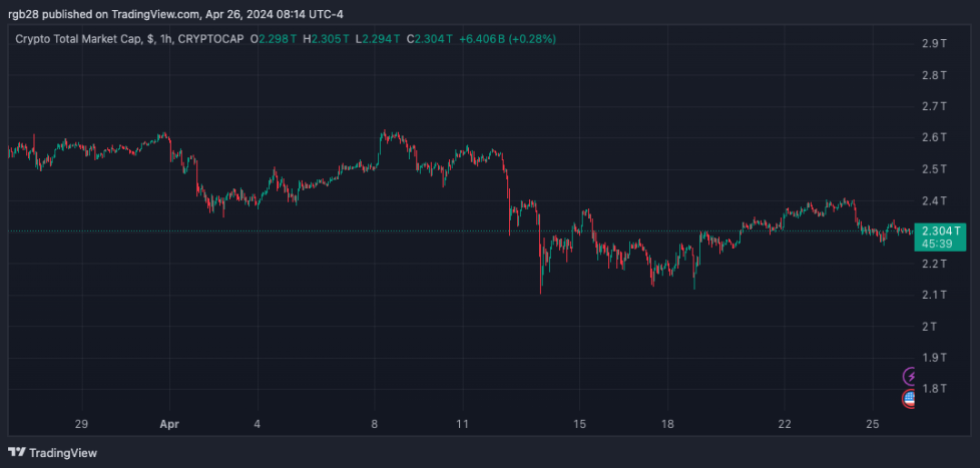Bitcoin Stablecoins Ratio At 1-Yr Lows: Why This Is Bullish
On-chain data shows the Bitcoin Exchange Stablecoins Ratio has plunged to its lowest since March 2023. Here’s what this could mean for BTC.
Bitcoin Exchange Stablecoins Ratio Has Been Heading Down Recently
As explained by an analyst in a CryptoQuant Quicktake post, the Bitcoin Exchange Stablecoins Ratio has been declining recently. The “Exchange Stablecoins Ratio” is an indicator that keeps track of the ratio between the Bitcoin and stablecoins exchange reserve.
The exchange reserve here is the total amount of a given cryptocurrency that all centralized exchanges are holding in their wallets right now. Generally, this part of the supply sitting in these platforms is considered the available trading supply of the asset.
What the trend in this indicator may imply for the market, though, depends on the exact type the cryptocurrency in question is. In the case of volatile assets like Bitcoin, investors may transfer to these platforms when they want to sell.
As such, an increase in the exchange reserve may imply that the available sell supply of the asset has gone up, which could naturally prove to be bearish for the price.
For stablecoins, exchange deposits also imply that investors want to trade from these coins into other assets or fiat. The difference, though, is that a shift of stables into other cryptocurrencies is bullish for their prices, as this swap obviously acts as buying pressure for them.
For this reason, the total exchange reserve of all stablecoins is often considered the available buying supply for the volatile side of the cryptocurrency sector.
Now, here is a chart that shows the trend in the Bitcoin Exchange Stablecoins Ratio over the past few years:

The value of the indicator appears to have been riding a downtrend in recent days | Source: CryptoQuant
As displayed in the above graph, the Bitcoin Exchange Stablecoins Ratio has been declining for a while now, but the indicator’s downtrend has especially sharpened recently.
When this indicator has a low value, it means that the BTC exchange reserve is low in comparison to that of all stablecoins right now. Since this may correspond to the ‘sell supply’ of the asset being lower than the ‘buy supply’, the indicator assuming such a value can be bullish for BTC.
According to this indicator, the potential selling pressure in the market had risen to its peak in mid-2023, but it has been on its way down since then. So far, the metric has retraced back to levels observed in March 2023.
The latest values of the indicator are still high when compared to those observed during the 2022 bear market lows, but the fact that they are only going down may be an optimistic sign.
That said, in the current post-ETF environment, it’s unclear how relevant the exchange reserves are now (and therefore, the indicator), as the ETFs offer a different avenue into Bitcoin, for which demand has been significant so far.
BTC Price
Since its initial surge beyond the $70,000 mark, Bitcoin has been stuck in consolidation during the last few days, as it’s still trading around this level.
Looks like the price of the coin has gone stale over the past few days | Source: BTCUSD on TradingView
Featured image from Shutterstock.com, CryptoQuant.com, chart from TradingView.com


